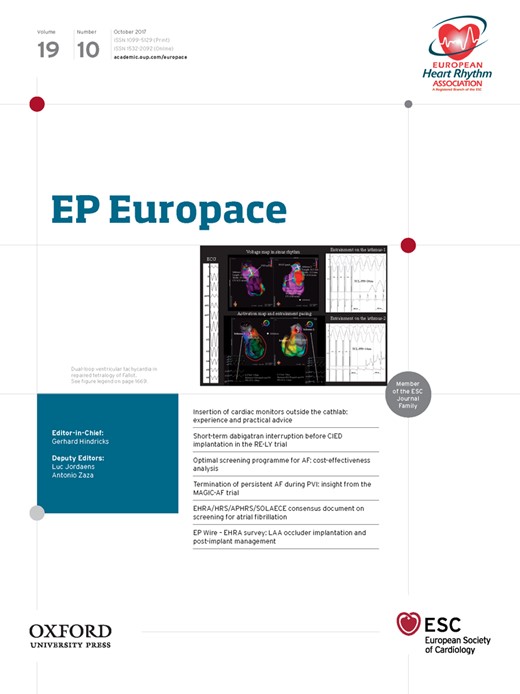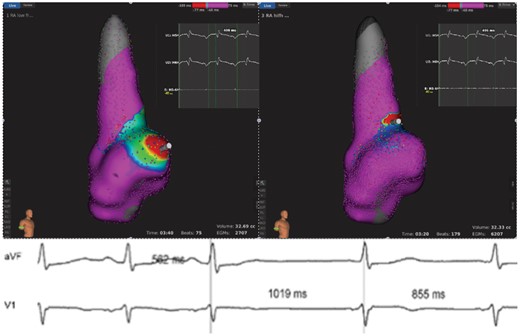-
PDF
- Split View
-
Views
-
Cite
Cite
Susanne Löbe, Jedrzej Kosiuk, Silke John, Sebastian Hilbert, Gerhard Hindricks, Andreas Bollmann, Sinus node modification with an ultra high-density electroanatomical mapping system in inappropriate sinus tachycardia, EP Europace, Volume 19, Issue 10, October 2017, Page 1656, https://doi.org/10.1093/europace/euw387
Close - Share Icon Share
A 45-year-old woman presented with a longstanding history for medication-refractory inappropriate sinus tachycardia. Using the ultra high-density electroanatomical mapping system, Rhythmia™ system (Boston Scientific, Inc.), maps of the right atrium were created using a mini basket catheter (Boston Scientific, Inc).
Baseline cycle length was 550 ms. To identify sinus node areas responsible for lower (target) vs. higher heart rates deemed appropriate for ablation, mapping was performed after consecutive intravenous metoprolol and orciprenaline administration. Under deep sedation with propofol, a heart rate reduction to a cycle length of 760 ms was achieved with metoprolol; the earliest activation site was located at the inferior base of the right atrial appendage (top left panel). Afterwards orciprenaline was increasing the cycle length to 410 ms; the earliest activation site was shifted cranially, anterior to the crista terminalis (bottom left panel). There, during radiofrequency ablation (Intella NavOI, Boston Scientific, Inc.), an abrupt decrease of the heart rate was documented (right panel). After switching off orciprenaline, heart rate was 75 b.p.m. (cycle length (CL) 800 ms).
In this case, Rhythmia™ system allowed rapid, very detailed assessment of early activation sites at different heart rates resulting in successful radiofrequency ablation of inappropriate sinus tachycardia.
The full-length version of this report can be viewed at: http://www.escardio.org/Guidelines-&-Education/E-learning/Clinical-cases/Electrophysiology/EP-Case-Reports.




